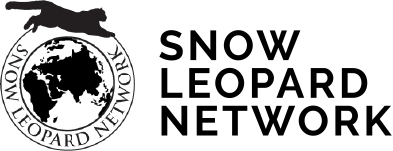An unusual lowest elevation record of snow leopard (Panthera uncia) in Nepal.
Lowest elevation record of snow leopard in Nepal
DOI:
https://doi.org/10.56510/slr.v3.23128Keywords:
Dispersal, movement, new record, lowest elevation, Panthera unciaAbstract
The snow leopard, Panthera uncia, is a flagship species of the mountainous region in South and Central Asia. In Nepal Himalayas, the species is distributed from 3000 to 6000 m. The present finding of a snow leopard on 23 January 2024 at an elevation of 146 m. in Charghare, Urlabari of Morang District was an unusual record. This is the first recorded case of a snow leopard at such a lower elevation. Fortunately, the leopard was rescued promptly and subsequently transferred to the Central Zoo, located in Jawalakhel, Lalitpur for further treatment. Following its rescue, two snow leopard scats were collected within a week from the enclosure. These scats were then analyzed using fecal analysis techniques to identify the prey hair remains in the scats. The analysis revealed that the leopard had consumed naur (Pseudoys nayaur) and unidentified rodent species, as evidence by the hair samples present in the scats. Additionally, several claws, likely from small mammals were also recorded which remain unidentified. This finding strongly suggests that the snow leopard had descended from its usual higher elevations. It is plausible that the leopard may have lost its way and ended up in densely populated human settlements. This has opened a new avenue for research in this area. There is now a pressing need for joint collaborative research to assess the corridors and connectivity crucial for the survival of these magnificent species.
Downloads
References
Bhatta, S., Dhamala, M. K., Aryal, P. C., Chauhan, R. and Dawadi, B. 2018. Climate variability and associated response of Larix griffithii in Kanchenjunga conservation area of Nepal. Applied Ecology and Environmental Sciences, 6(1): 23-30. http://dx.doi.org/10.12691/aees-6-1-4 DOI: https://doi.org/10.12691/aees-6-1-4
Bohrer, G.; Nathan, R. and Volis, S. 2005. Effects of long-distance dispersal for metapopulation survival and genetic structure at ecological time and spatial scales. Journal of Ecology 93:1029–1040. https://doi.org/10.1111/j.1365-2745.2005.01048.x DOI: https://doi.org/10.1111/j.1365-2745.2005.01048.x
Chetri, M., Odden, M. and Wegge, P. 2017. Snow leopard and Himalayan wolf: food habits and prey selection in the Central Himalayas, Nepal. PloS one, 12(2), e0170549. DOI: https://doi.org/10.1371/journal.pone.0170549
Clobert, J.; Le Galliard, J.-F.; Cote, J.; Meylan, S. and Massot, M. 2009. Informed dispersal, heterogeneity in animal dispersal syndromes and the dynamics of spatially structured populations. Ecology Letters 12: 197–209. https://doi.org/10.1111/j.1461-0248.2008.01267.x DOI: https://doi.org/10.1111/j.1461-0248.2008.01267.x
GSLEP. 2022. Global Snow Leopard and Ecosystem Protection Program, https://globalsnowleopard.org/the-snow-leopard/cat-facts/behavior-ecology/#:~:text=Dispersal%3A,desert%20to%20reach%20isolated%20massifs accessed on 27 February 2024.
Huck, M., Jędrzejewski, W., Borowik, T., Miłosz-Cielma, M., Schmidt, K., Jędrzejewska, B., Nowak, S. and Mysłajek, R.W. 2010.Habitat suitability, corridors and dispersal barriers for large carnivores in Poland. Acta Theriologica 55: 177–192. https://doi.org/10.4098/j.at.0001-7051.114.2009 DOI: https://doi.org/10.4098/j.at.0001-7051.114.2009
Jackson, R. and Ahlborn, G. 1989. Snow leopards (Panthera uncia) in Nepal: home range and movements. National geographic research, 5(2): 161-175.
Jackson, R. M., Mishra, C., McCarthy, T. M. and Ale, S. B. 2010. Snow leopards: conflict and conservation. The biology and conservation of wild felids, 2: 417-430.
Jnawali, S.R., Baral, H.S., Lee, S., Acharya, K.P., Upadhyay, G.P., Pandey, M., Shrestha, R., Joshi, D., Lamichhane, B.R., Griffiths, J., Khatiwada, A. and Amin, R (compilers) (2011). The status of Nepal mammals: the National Red List Series. Department of National Parks and Wildlife Conservation, Kathmandu, Nepal, 276 pp.
Johansson, Ö., Rauset, G. R., Samelius, G., McCarthy, T., Andrén, H., Tumursukh, L. and Mishra, C. 2016. Land sharing is essential for snow leopard conservation. Biological Conservation, 203: 1-7. DOI: https://doi.org/10.1016/j.biocon.2016.08.034
Johansson, Ö., Ausilio, G., Low, M., Lkhagvajav, P., Weckworth, B. and Sharma, K. 2021. The timing of breeding and independence for snow leopard females and their cubs. Mammalian Biology, 101(2): 173-180. DOI: https://doi.org/10.1007/s42991-020-00073-3
Johansson, Ö., Alexander, J.S., Lkhagvajav, P., Mishra, C. and Samelius, G. 2024. Natal dispersal and exploratory forays through atypical habitat in the mountain-bound snow leopard. Ecology e4264. https://doi.org/10.1002/ecy.4264 DOI: https://doi.org/10.1002/ecy.4264
Marucco, F., Pilgrim, K. L., Avanzinelli, E., Schwartz, M. K. and Rossi, L. 2022. Wolf dispersal patterns in the Italian Alps and implications for wildlife diseases spreading. Animals, 12(10), 1260. https://doi.org/10.3390/ani12101260 DOI: https://doi.org/10.3390/ani12101260
McCarthy, T.M. 2000. Ecology and conservation of snow leopards, Gobi brown bears, and wild bactrian camels in Mongolia. Ph.D. Dissertation, University of Massachusetts, Amherst, 133.
McCarthy, T., Mallon, D., Jackson, R., Zahler, P. and McCarthy, K. 2017. Panthera uncia. The IUCN Red List of Threatened Species 2017: e.T22732A50664030. https://dx.doi.org/10.2305/IUCN.UK.2017-2.RLTS.T22732A50664030.en. Accessed on 09 February 2024. DOI: https://doi.org/10.2305/IUCN.UK.2017-2.RLTS.T22732A50664030.en
MoFSC. 2017. Snow Leopard and Ecosystem Management Plan (20172026). Ministry of Forests and Soil Conservation, Kathmandu, Nepal.
Schaller, G. B., Junrang, R. and Mingjiang, Q. 1988. Status of the snow leopard Panthera uncia in Qinghai and Gansu Provinces, China. Biological Conservation, 45(3): 179-194. DOI: https://doi.org/10.1016/0006-3207(88)90138-3
Snow Leopard Network. 2014. Snow leopard survival strategy. Seattle, Washington, USA, 1-145.
Stoner, D. C., Wolfe, M. L., Mecham, C., Mecham, M. B., Durham, S. L., and Choate, D. M. 2013. Dispersal behaviour of a polygynous carnivore: do cougars Puma concolor follow source‐sink predictions?. Wildlife Biology, 19(3): 289-301. DOI: https://doi.org/10.2981/12-124
The Weather Company, LLC. 2024. The Weather Channel (https://weather.com/en-IN/weather/monthly/l/86c6ed4ff75b47bccb9f7f2085e40c934f28d214c61dd3c3aa8531990ea8cd59)
Downloads
Published
How to Cite
Issue
Section
License
Copyright (c) 2024 Madhu Chetri, Birendra Gautam, Ramesh Kumar Yadav, Raj Kumar Gurung, Parbat Jung Thapa, Naresh Subedi, Chiranjibi Prasad Pokheral

This work is licensed under a Creative Commons Attribution 4.0 International License.
Authors contributing to Snow Leopard Reports retain copyright of their work, with first publication rights granted to the Snow Leopard Network. Read the journal's full Copyright- and Licensing Policy.


